I always look forward to repotting trees that haven’t been repotted in a while. It’s a great opportunity to make improvements to the surface roots and I can change the look of the tree by selecting a new container.
Although the focus of this post will be on container selection, here are some details about the root-work.
Because many years had passed since the tree was last repotted, some roots had grown above the lip of the pot. The first step is to remove these roots to reveal the base of the trunk.

Root build-up

After revealing the base of the trunk
Here’s the tree after basic root-work.
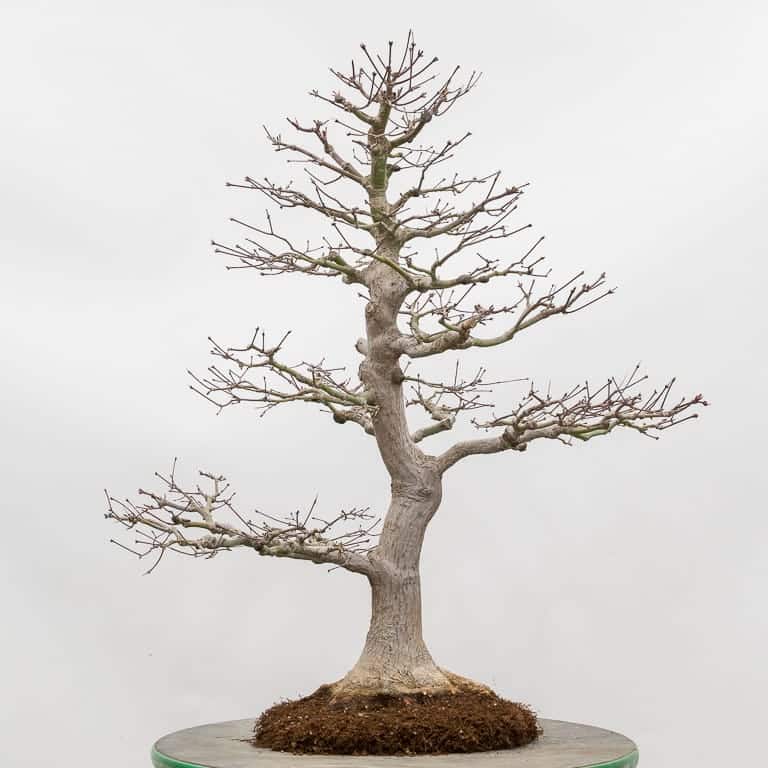
Japanese maple
On the bottom of the root ball, I removed the soil in middle to check for old soil. The soil was good right up to the base of the trunk.

Concave root ball
Because I don’t want air pockets below the trunk, I perforated the root ball which will let me fill in this area from above. I used chopsticks to mark the openings into which I will add new soil.
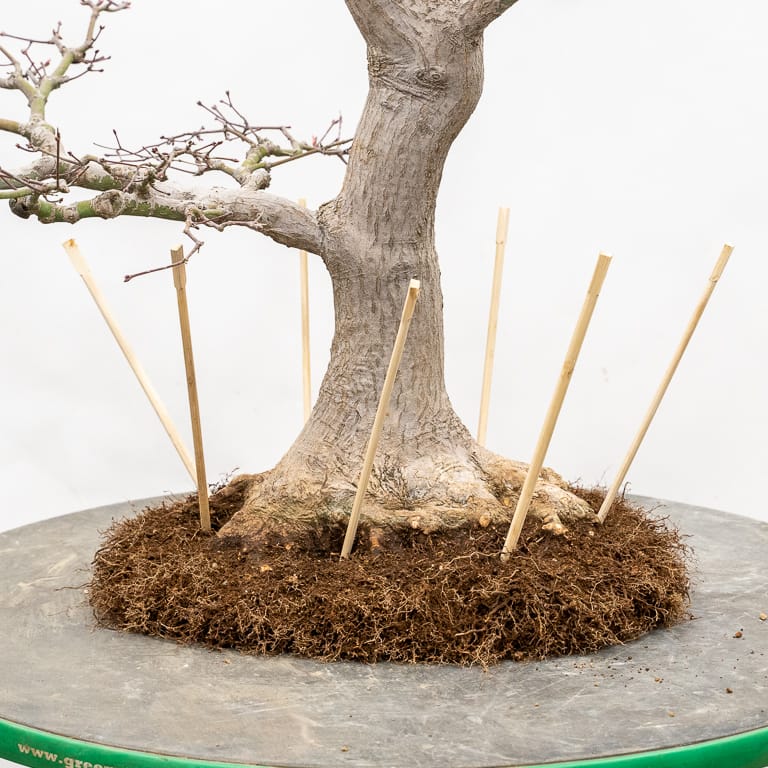
Chopsticks marking perforations in the root ball
Next, it was time to select a new container for the tree.
I’ve included the external dimensions of the pots to suggest the effect small differences in size can make. The tree, for reference, is 31″ tall, 28″ wide, and 26″ deep. The surface roots are 8.5″ wide at the soil-line and the trunk is 2.5″ wide half-way between the soil and the first branch.
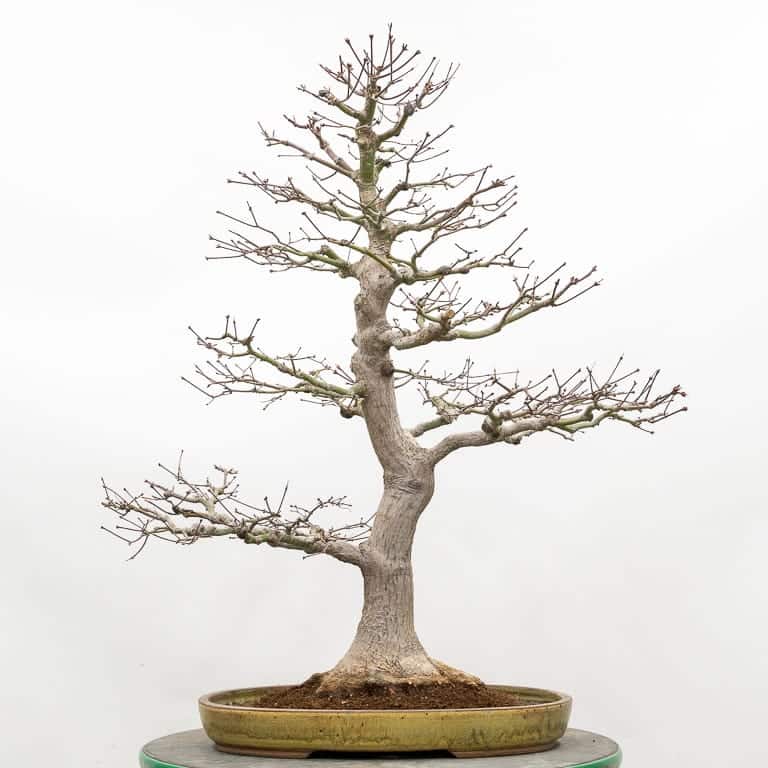
#1 – Sara Rayner: 18″ wide, 2-3/8″ deep
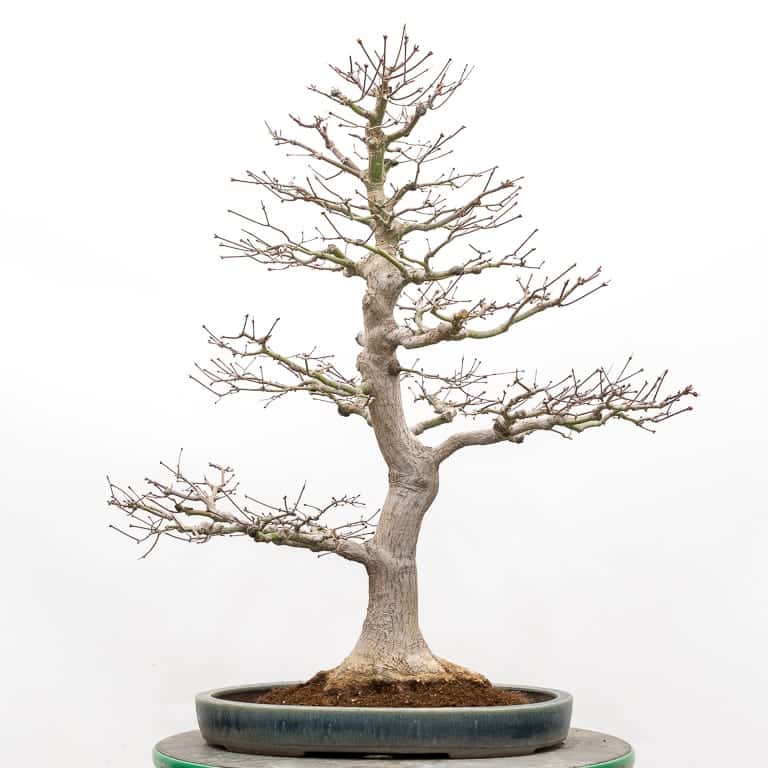
#2 – Suishoen: 18 1/4″ wide, 2 3/8″ deep
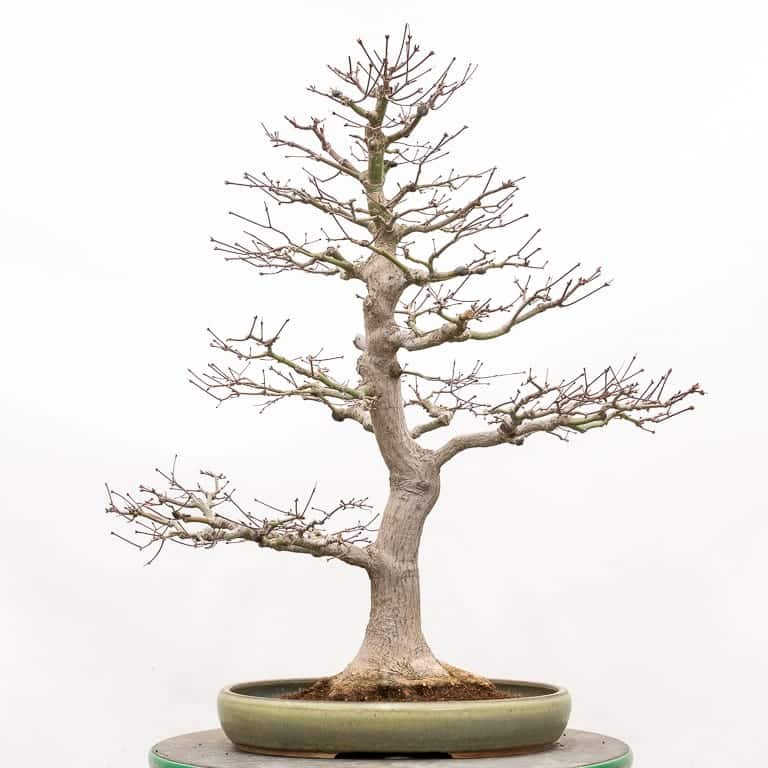
#3 – Sara Rayner: 17 1/4″ wide, 2 3/4″ deep
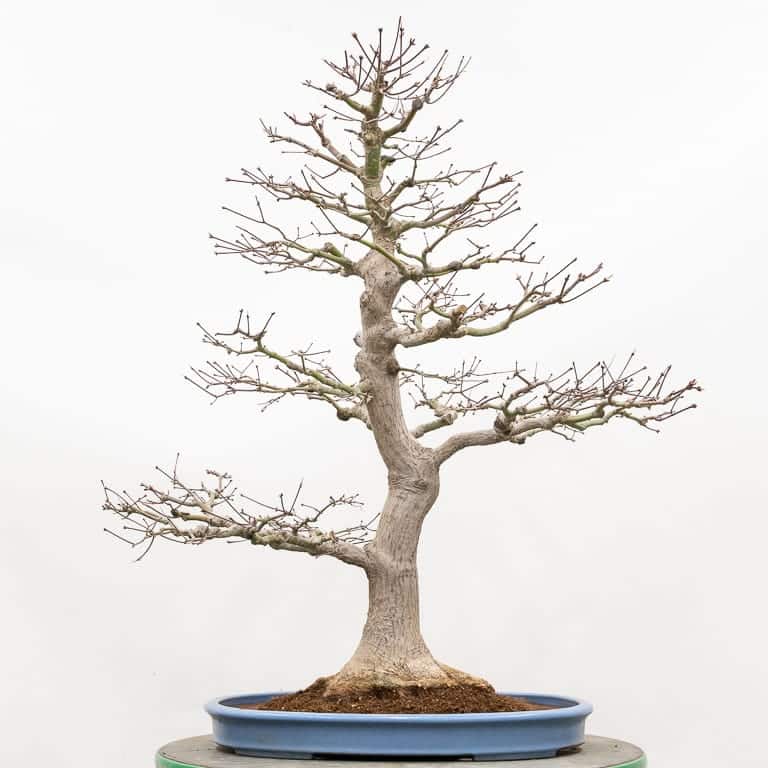
#4 – Yamafusa: 18 1/2″ wide, 2 3/16″ deep
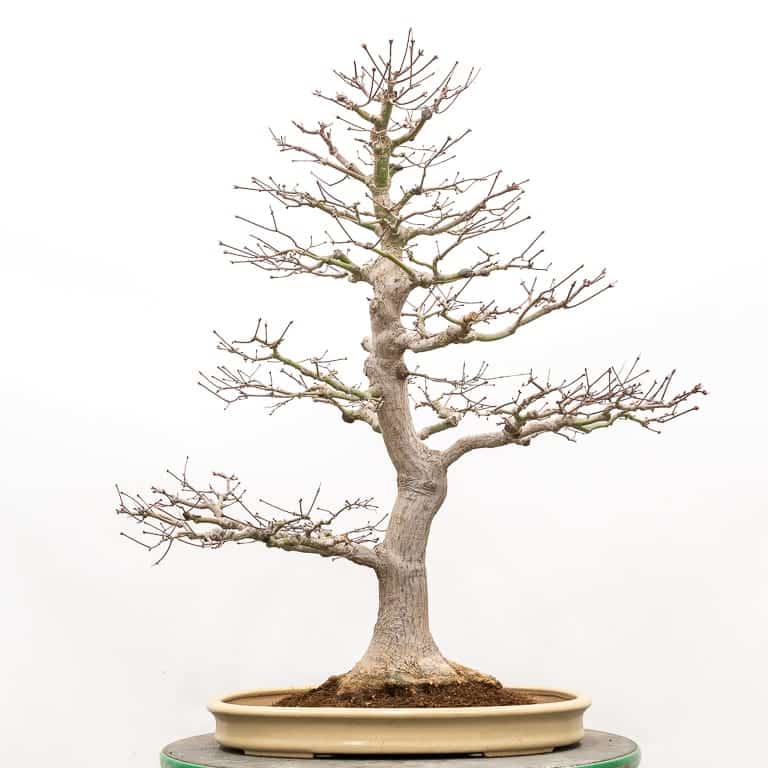
#5 – Reiho: 18 5/8″ wide, 2 3/8″ deep
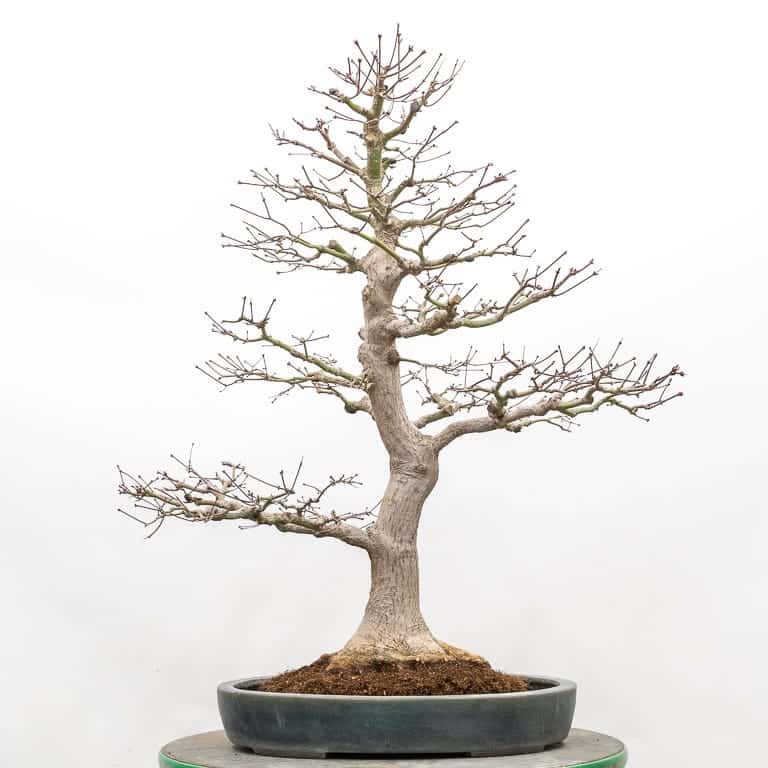
#6 – Yamaaki: 18″ wide, 3″ deep
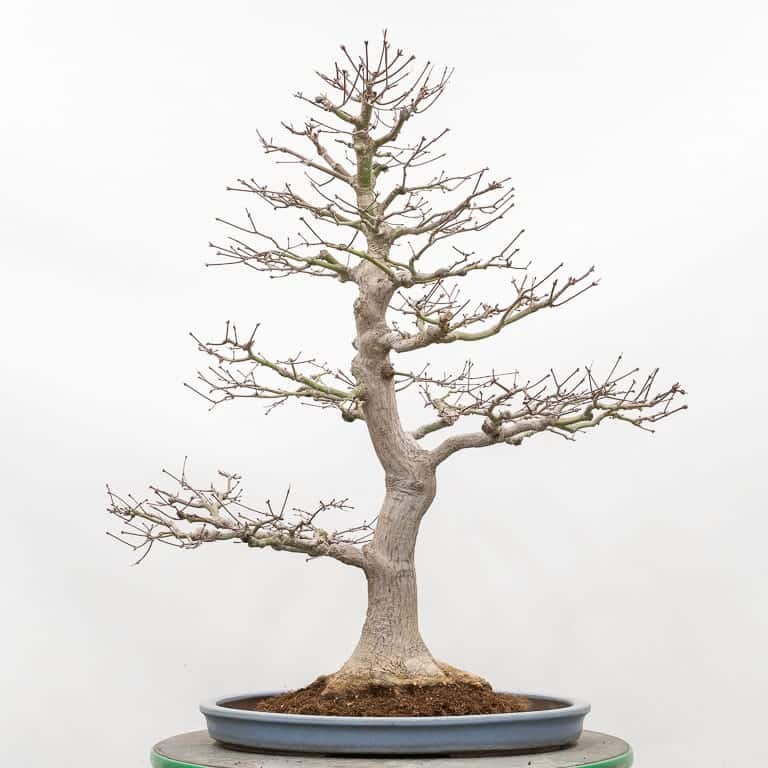
#7 – Yamaaki: 19″ wide, 2 1/16″ deep
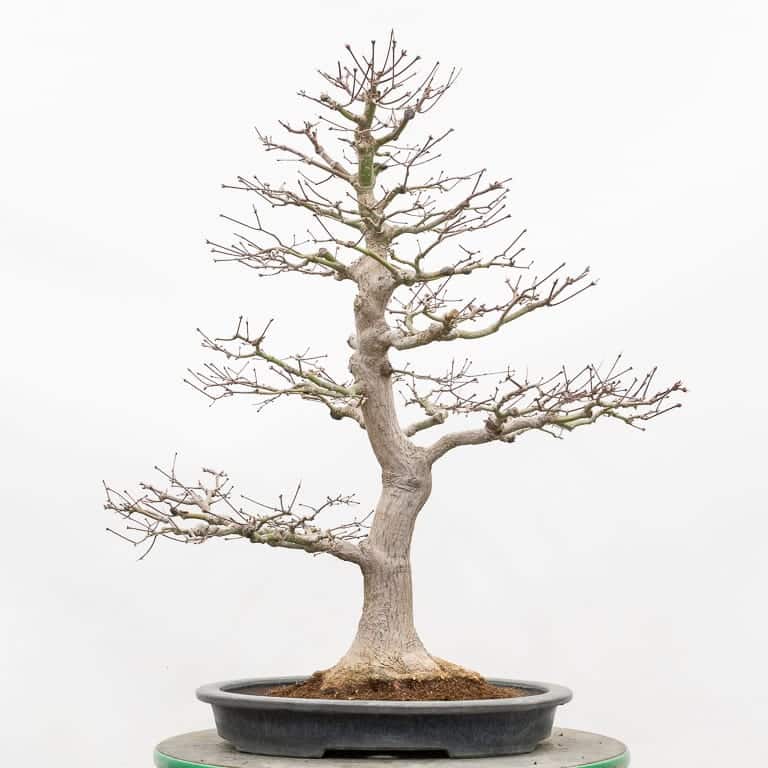
#8 – Suishoen: 18 1/2″ wide, 2 3/4″ deep
I liked different things about each of the options. The darker blues look great against the light-colored bark, and the light blues will look good with pale green foliage in spring. The two yellow pots will look good year-round.
For me, the biggest difference in feeling resulted from the container dimensions and the shape of the pot lip.
In the end, I selected a pot for its size: the relatively deep Yamaaki.

Repotting complete – pot #6
I’d like to use a shallow pot in the future, but for now I want to increase root development at the base of the trunk. By using a deeper pot, I can bury the base of the roots while encouraging lateral root development.
Depending on how the tree grows in this pot, I’ll look to use a shallower container the next time I repot.
New Book: The Suiseki Art of Mas Nakajima
Sam Edge and Janet Roth have created a tribute to the suiseki art of Mas Nakajima in a hard-cover book featuring 63 of Nakajima’s best-known stones.
The 11″ by 13″ book is 102 pages and includes remembrances from friends, family, and students. The beautiful photography and clean layout by Sam Edge makes the book a beautiful reference of Nakajima’s work.
Learn more about Nakajima at the Suiseki Art website. You can browse a preview of the book at The Suiseki Art of Mas Nakajima.
Subscribe to Bonsai Tonight
New Posts Delivered Every Tuesday and Friday

Richard Dorfman says
Great post, Jonas. I must be gaining in bonsai knowledge;
I selected the pot you chose…mainly for aesthetic reasons. 😎
Jonas Dupuich says
Thanks, Richard – I’m glad you appreciate the pot too!
Jeffrey Robson says
Jonas, Great post. Love it so much we reposted on our club’s FB page. Also was notified my book on Mas’ stones shipped Wednesday. Cann’t wait to receive it. Andrew and I have a few of his suiseki.
Jonas Dupuich says
Thanks, Jeffrey! Mas’ stones are wonderful – that’s great you and Andrew have a few, will have to see them someday!
Gary McCarthy says
Are you using 100% Akadama for your maples?
What brand of Akadama do you use for your trees?
Thanks,
GARY
Jonas Dupuich says
Hi Gary – I’m using Double Red Line, Clay King, and Aoki Blend this year for akadama. For mature maples, I use between 50-80% akadama.
Peter Grisdale says
Yip I too like others selected the same pot as you did lol, I like the shallower pots also but thought for the health of the tree the deeper yamaki pot would be more suitable, maybe if I was showing the tree I would have gone for a shallower option but tree health comes first 👍🏻
Jonas Dupuich says
Ha, thanks Peter!
Paolo says
Altough #6 is a better choice I Like pot #8 Suishoen, perhaps the lip is a little too big but makes good handle 😉 . I’m restoring an old big multitrunk maple which ramification has lignified creating small but few leaves, many buds but no many shoots. Is this a ‘thing’? Do old maples need strong cut back to regain vigor?
Thank you.
Jonas Dupuich says
Thanks, Paolo! The main thing for increasing vigor is to focus on the roots. If it’s an old tree, planting it in a slightly oversized wood box and letting it grow freely for a couple of years is a common first step. If the tree is weak, pruning can slow it down if the tree isn’t strong enough to push.
Ryan says
Hey Jonas, another great post as usual. I understand your pot selection given your intention to develop the roots (and it’s just a nice pot too!), but I note you said you’d like to use a shallower pot in the future. Would you look at keeping the same pot width to maintain proportion and just go with a shallower depth?
I really liked the #1 Sarah Rayner in terms of proportion, so was just wondering what your thoughts were.
Love your blog!
Jonas Dupuich says
Thanks, Ryan – and great question about the pot. One thing that struck me was that different widths looked good depending on the shape of the pot, particularly the side walls and the lip. I expect I’d look for something with similar width – like the Rayner – but less depth. The Reiho (#5) might look good were it a bit smaller, both in depth and width.